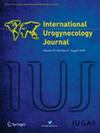产科肛门括约肌损伤:泌尿妇科的检测和诊断。
IF 1.8
3区 医学
Q3 OBSTETRICS & GYNECOLOGY
引用次数: 0
摘要
产科肛门括约肌损伤(OASIs)仍然是产后发病率和长期肛门失禁的主要原因。尽管产科护理取得了进步,但由于直肠指检(DRE)的灵敏度有限以及分娩环境中缺乏成像方式,许多损伤仍未得到诊断。这篇特别的文章探讨了改善早期诊断的临床、教育和技术机会,重点是集成结构化DRE评分系统和阻抗谱等新兴技术。我们提倡从选择性到常规产后筛查和泌尿妇科领导标准化护理途径的转变。本文章由计算机程序翻译,如有差异,请以英文原文为准。
Obstetric Anal Sphincter Injuries: A Urogynecologic Perspective on Detection and Diagnosis.
Obstetric anal sphincter injuries (OASIs) remain a major cause of postpartum morbidity and long-term anal incontinence. Despite advances in obstetric care, many injuries remain undiagnosed due to the limited sensitivity of digital rectal examination (DRE) and lack of imaging modalities in delivery settings. This special contribution explores the clinical, educational, and technological opportunities to improve early diagnosis, with a focus on integrating structured DRE scoring systems and emerging technologies such as impedance spectroscopy. We advocate for a shift from selective to routine postpartum screening and for urogynecology leadership in standardizing care pathways.
求助全文
通过发布文献求助,成功后即可免费获取论文全文。
去求助
来源期刊
CiteScore
3.80
自引率
22.20%
发文量
406
审稿时长
3-6 weeks
期刊介绍:
The International Urogynecology Journal is the official journal of the International Urogynecological Association (IUGA).The International Urogynecology Journal has evolved in response to a perceived need amongst the clinicians, scientists, and researchers active in the field of urogynecology and pelvic floor disorders. Gynecologists, urologists, physiotherapists, nurses and basic scientists require regular means of communication within this field of pelvic floor dysfunction to express new ideas and research, and to review clinical practice in the diagnosis and treatment of women with disorders of the pelvic floor. This Journal has adopted the peer review process for all original contributions and will maintain high standards with regard to the research published therein. The clinical approach to urogynecology and pelvic floor disorders will be emphasized with each issue containing clinically relevant material that will be immediately applicable for clinical medicine. This publication covers all aspects of the field in an interdisciplinary fashion

 求助内容:
求助内容: 应助结果提醒方式:
应助结果提醒方式:


